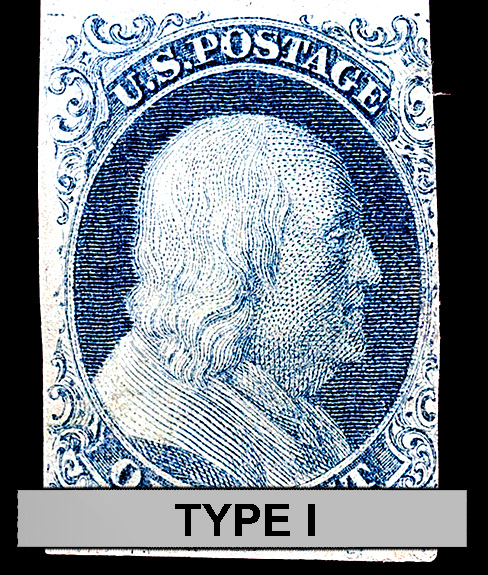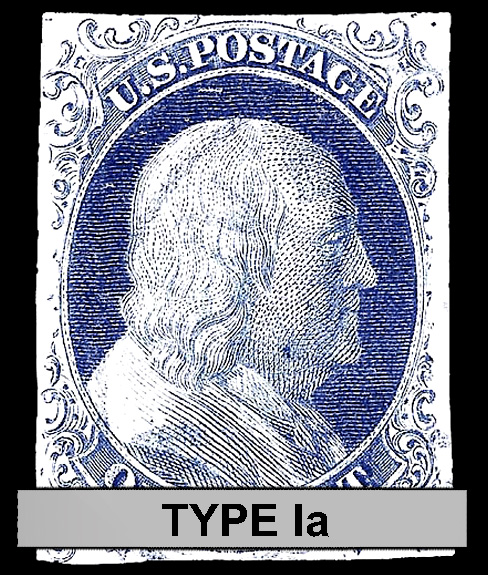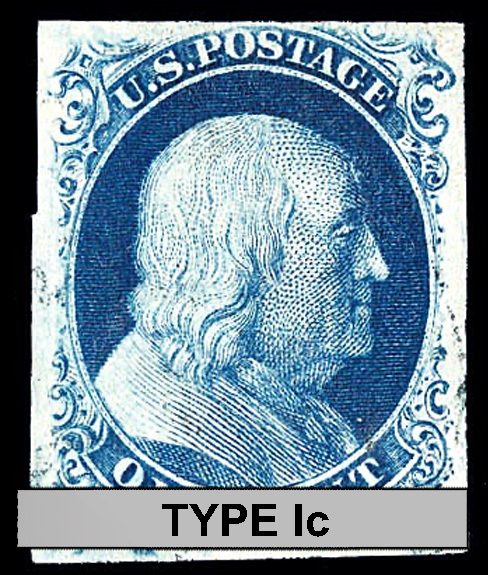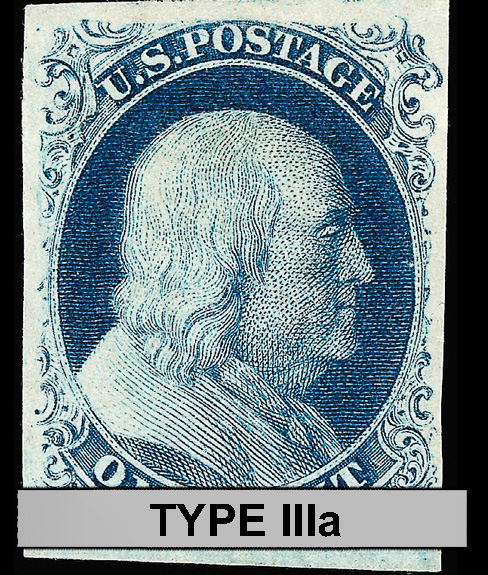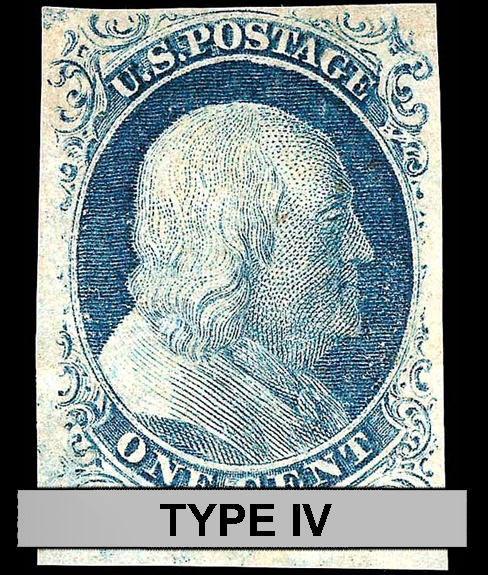Basic Info
1¢
Blue, pale blue, dark blue
TYPE IV
Printing Method: Die-to-relief-to-plate transfer process
Plates: I late
Printer: Toppan, Carpenter, Casilier & Co.
Subject: Benjamin Franklin
Number issued: Unknown
Perforations: Imperforate
Watermark: Unwatermarked
Scott #: 9
Issued: June 5th, 1852
Value
Used
$30 - $60
No postmark with gum (MH)
$250 - $3,000
Full perfect gum, no postmark
no trace of stamp hinge mark (MNH)
$1,800
Inspiration for the Design
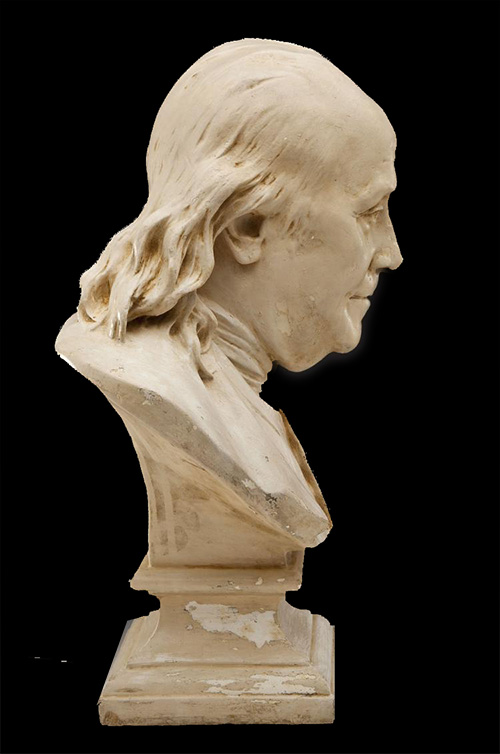
The vignette was based on Giuseppe Ceracchi's 1791 bust of Benjamin Franklin
#9a

#9a, printed on both sides
The Chicago Perforation
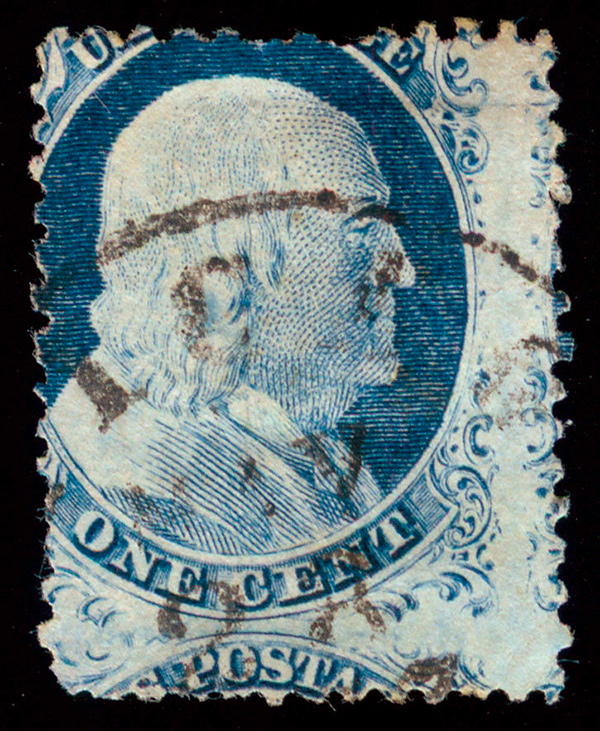
#9 Unofficial Chicago 12 ½ Hadley Gauge Perforations. Only 18 1¢ Chicago perfs survive. It occurs on the Type II and Type IV plates
The Precancel
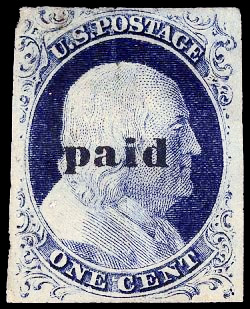
Issued by the Cleveland Post Office. Less than 10 copies survive.
First Day Cover
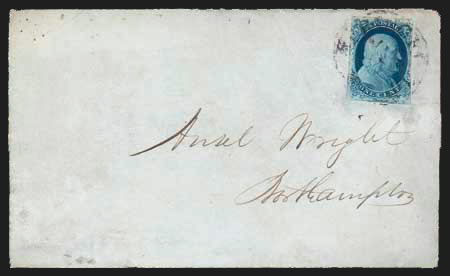
First day cover of #9 June 1st, 1852
Illustrated Cover
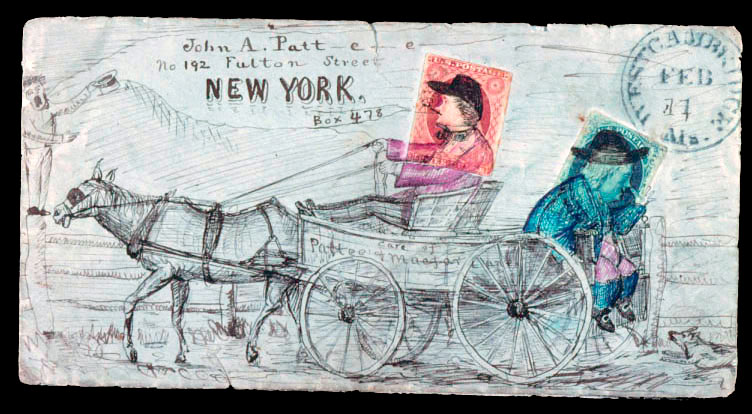
Illustrated cover with 1851 3¢
Identifying #9
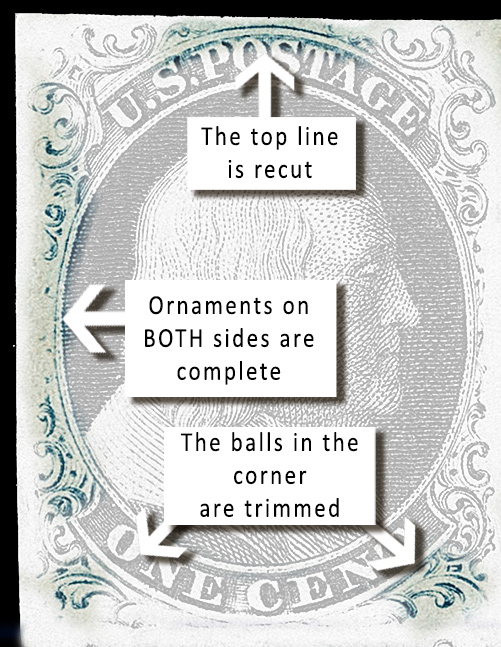
#9 is a Type IV design. The design on the bottom and top are incomplete in that the very tips of the balls and plumes have been burnished off. The outer frame line at the top and bottom are always complete, BUT has been recut at the top and/or the bottom to make them complete. The inner frame line at the top and/or bottom has sometimes been recut as well
Notes on #9
1) Plate IV (#9) is derived solely from plate I late (reconstruction). This plate was recut in May 1852, the first stamp from this plate being issued on June 1st, 1852.
2) 199 positions of the 200 on the plate were recut and many, if not all, were re-entered (the exception being 4R1L which remained as a type II (#7). Any pair containing position 41RL are extremely collectable, I have not seen one in auction records for the last decade.
3) 113 positions on plate 1 had both the top and bottom lines recut, 40 positions had only the top line recut, 8 positions had only the bottom line recut, 11 positions had a double line recut at the bottom and 4 at the top and 2 positions had a double line recut at both the top and bottom.
4) Stamps with the double recuts (see note #3) are worth more than those with just one recut.
5) There are numerous double transfers, and a few triple transfers, none of which command high prices.
6) A certificate is required for position 4R1L pairs.
How many plates does #9 appear on?
Just the one plate, plate I (one) late.
The design of this early issue was too large to allow for the accommodation of the 200 subjects onto one plate. Therefore, each position had to have some amount of the design erased to allow enough room. These erasures accounted for the majority of the types.
How to read plate positions?
The first indicator is a number indicates its position on the plate, so 3RIE would have come from the third stamp on the plate. The number can range from 1 to 100, there being 100 stamps on each plate.
The second indicator is either the letter R or L, R indicates the stamp came from the right pane, L for the left pane. The stamp was printed in sheets of 200, each sheet was further divided into two panes of 100. Hence 3RIE would have come from the right pane as the second indicator in 3R1E is the letter R.
The third indicator can be from numbers I (1) to XII (12). This indicator is always shown in roman numerals. There were twelve plates, there are no stamps from plate VI (6) as it was destroyed before printing began (no doubt it was flawed). For example stamp 4RIL would have come from plate one (1).
The last or fourth indicator is either the letter E or L. The letter 'E' indicate an early state of the plate, the letter 'L' indicates the late state of the plate. This indicator only applies to PLATE I, as it is the only one that has an early and late plate. The early plate is the original plate. After 11 months the plate became worn and 199 of the 200 positions were recut. 113 positions on the plate had both top and bottom lines recut, 40 positions had only the top line recut, 8 positions had only the bottom line recut, 11 positions had a double recut at the bottom and 4 positions had a double recut at the to
How many plates were there?
There were twelve plates of the 1¢ Franklin made, plate six was never used, probably due to it being damaged in it's creation. Most of the plates were used for both the imperforate and perforated design. Some only produced one type or the other. For instance, plate 12 produced only perforated stamps and the early state of Plate 1 produced only imperforate stamps whilst plate I late (reconstruction) produced both imperforate and perforated stamps. Plate 4 was the last of the imperforate plates to be used.
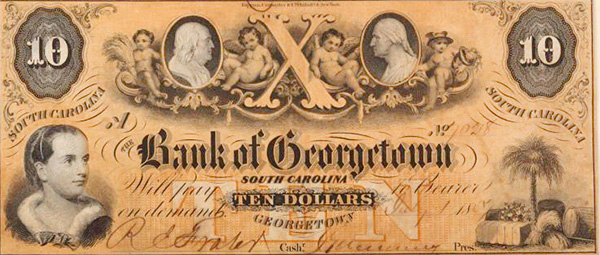
A contemporary banknote printed by Toppan, Carpenter with the same vignette as #21
Fakes

Narrow margins can be indicative of a #18 with its perforations trimmed off to appear as if it is a #5.
Notable Sales

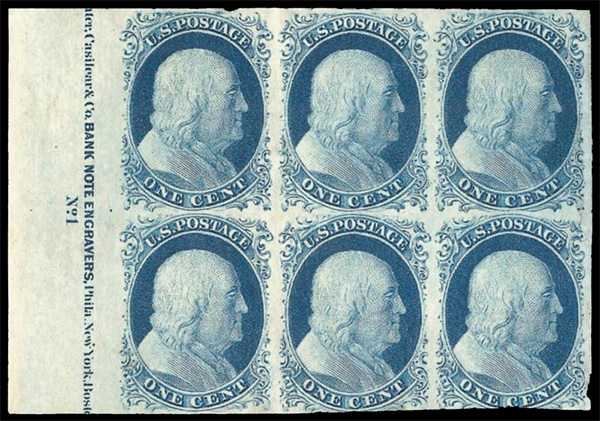
Plate block #1. The first plate block number.
Sold October 2010 for $14,160
Explore Robert Siegel's Auction Galleries
A full pane
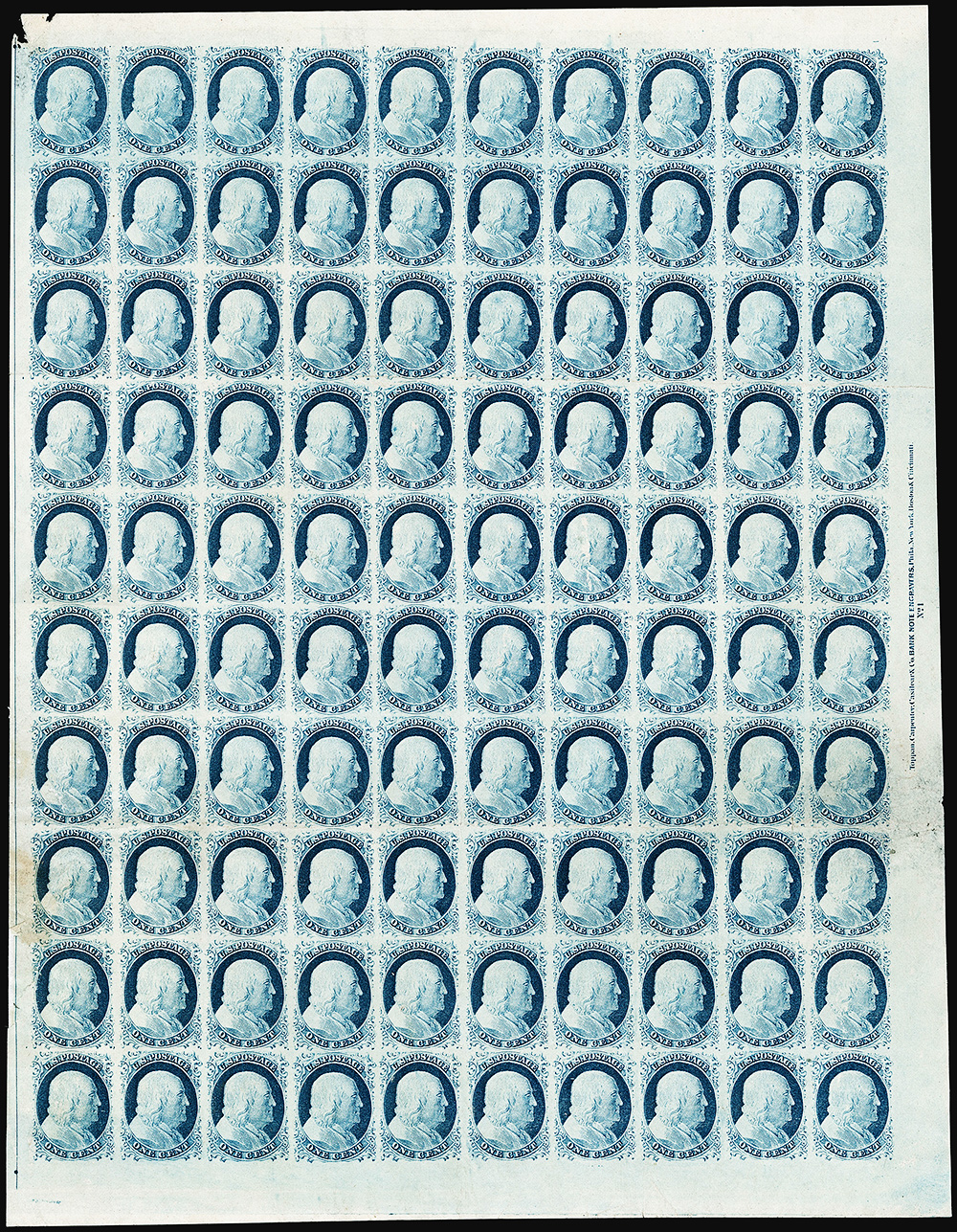
A full pane of #7 and #9. There are two panes to a sheet of 200

Chart supplied by courtesy of Chris Biason










